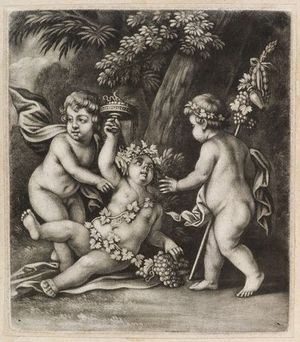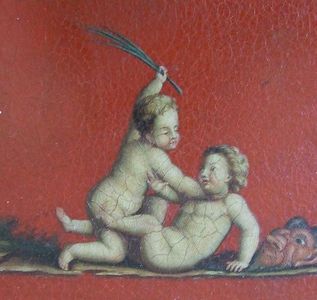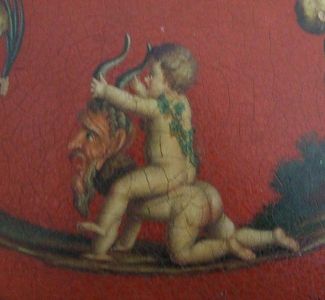Putto
The putto (plural putti) is a figure of a human baby, almost always male, often naked and having wings, found especially in Italian Renaissance art. The figure derives from Ancient art but was rediscovered in the early Quattrocento. Strictly, they are distinct from cherubim, but modern English usage has blurred the distinction, except that in the plural, "the Cherubim" refers to the literal biblical angels, while "cherubs" is used more often to refer to the childlike representations (putti) or in figurative senses.
Putti are found amass in European churches and secular buildings, in frescoes, paintings and sculpture. They are visible proof that nudity is different from obscenity, and even frontal child nudity is acceptable in such depictions, and most certainly does not constitute child pornography. In Christian contexts, putti themselves represent the very idea of innocence, including sexual innocence. In secular contexts, putti are not always so asexual and innocent. The Ancient God of Love, Eros (Amor, Cupid) is often depicted as a winged boy in the way of a putto, and his comrades, the Erotes, share this image.
See also
| This page may use content from Wikipedia. The original article was at Putto. The list of authors can be seen in the page history. |
Chat rooms • What links here • Copyright info • Contact information • Category:Root


